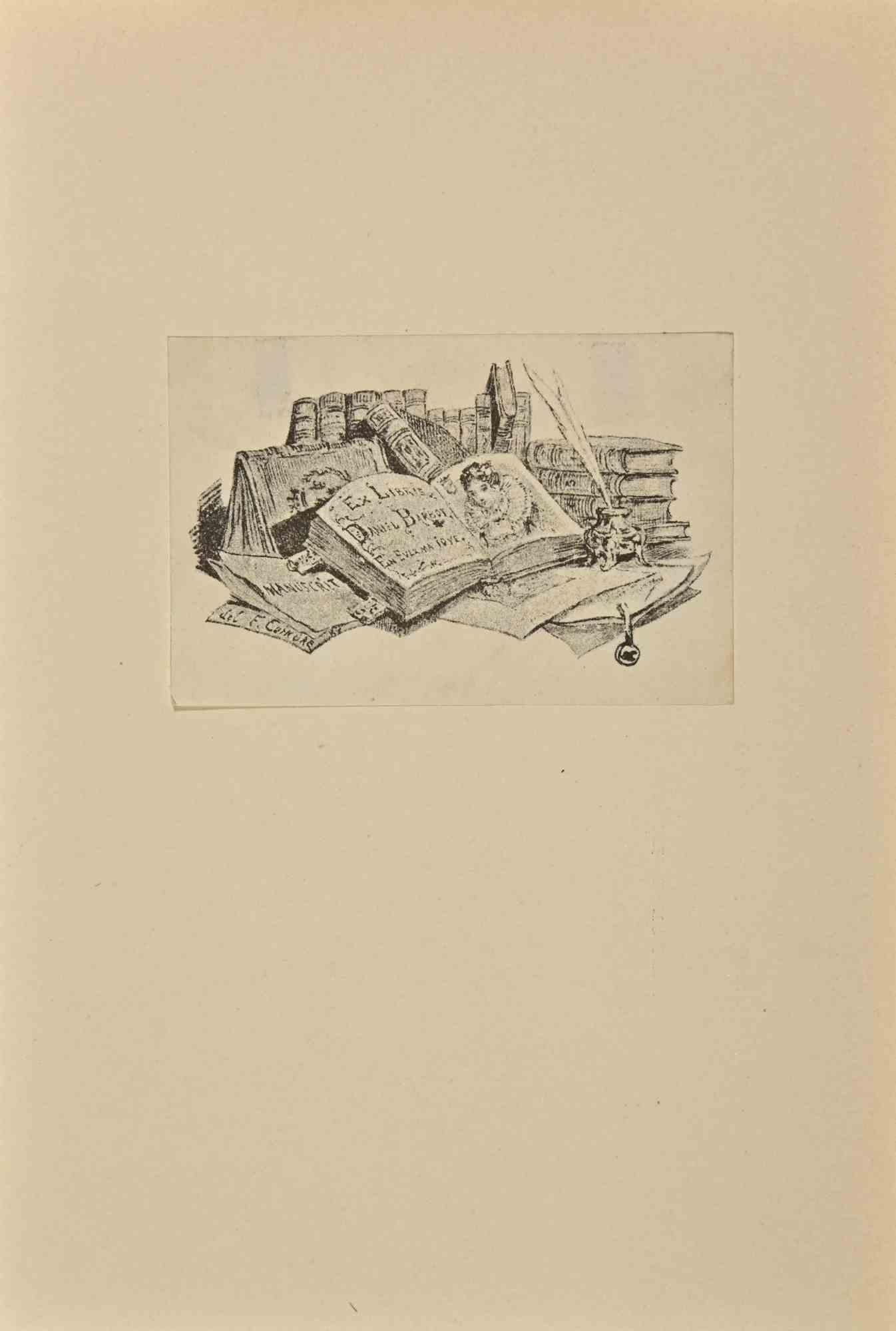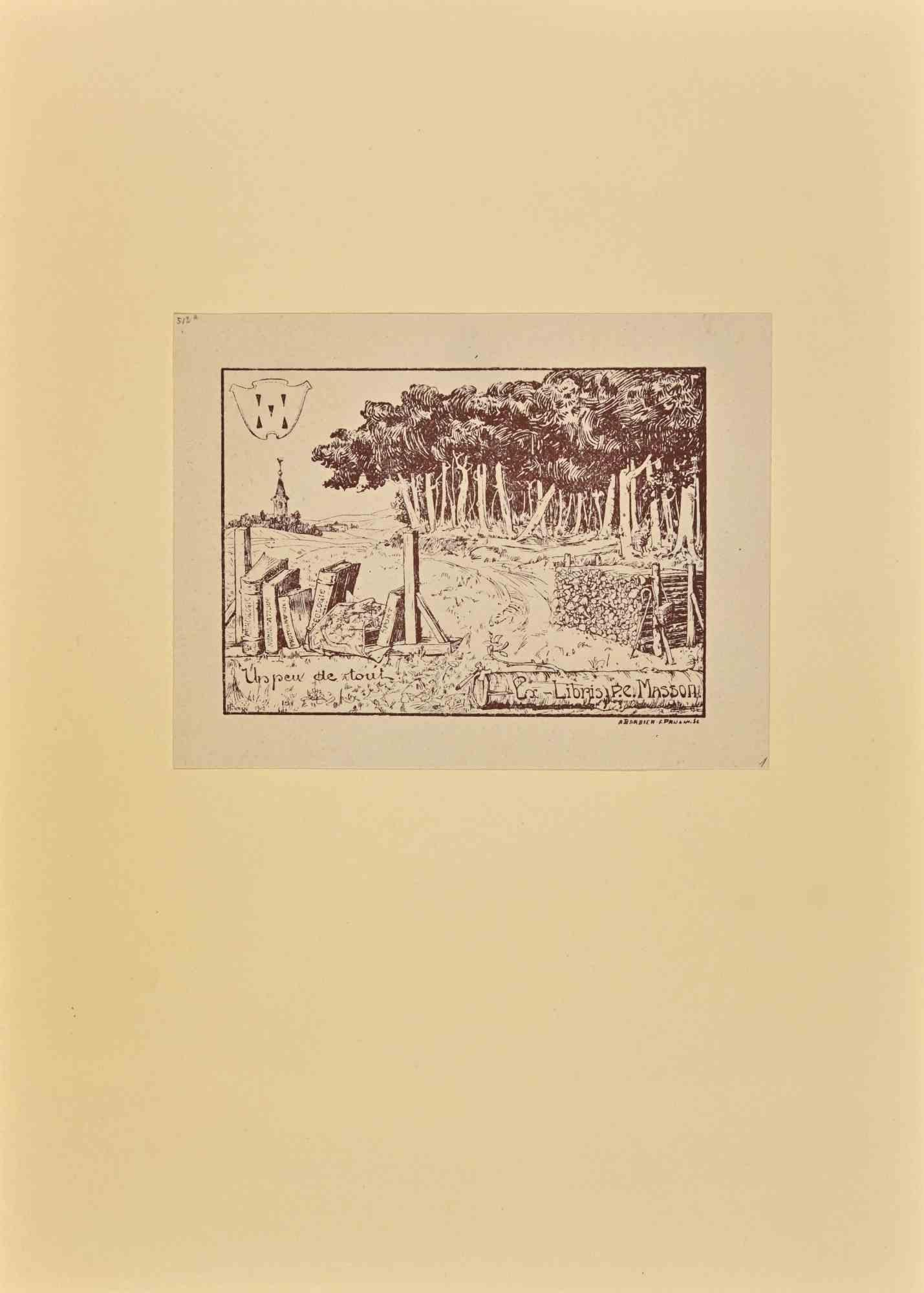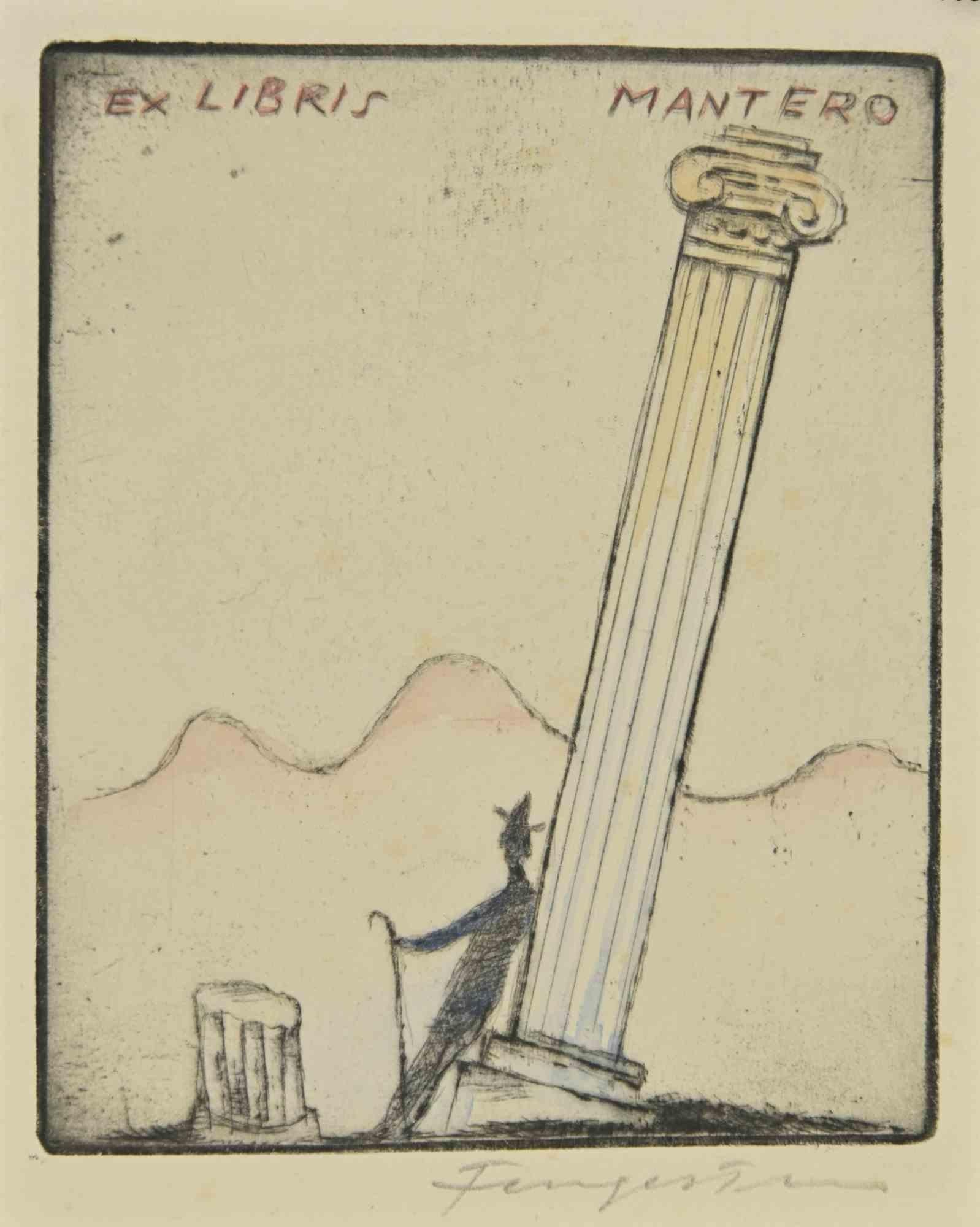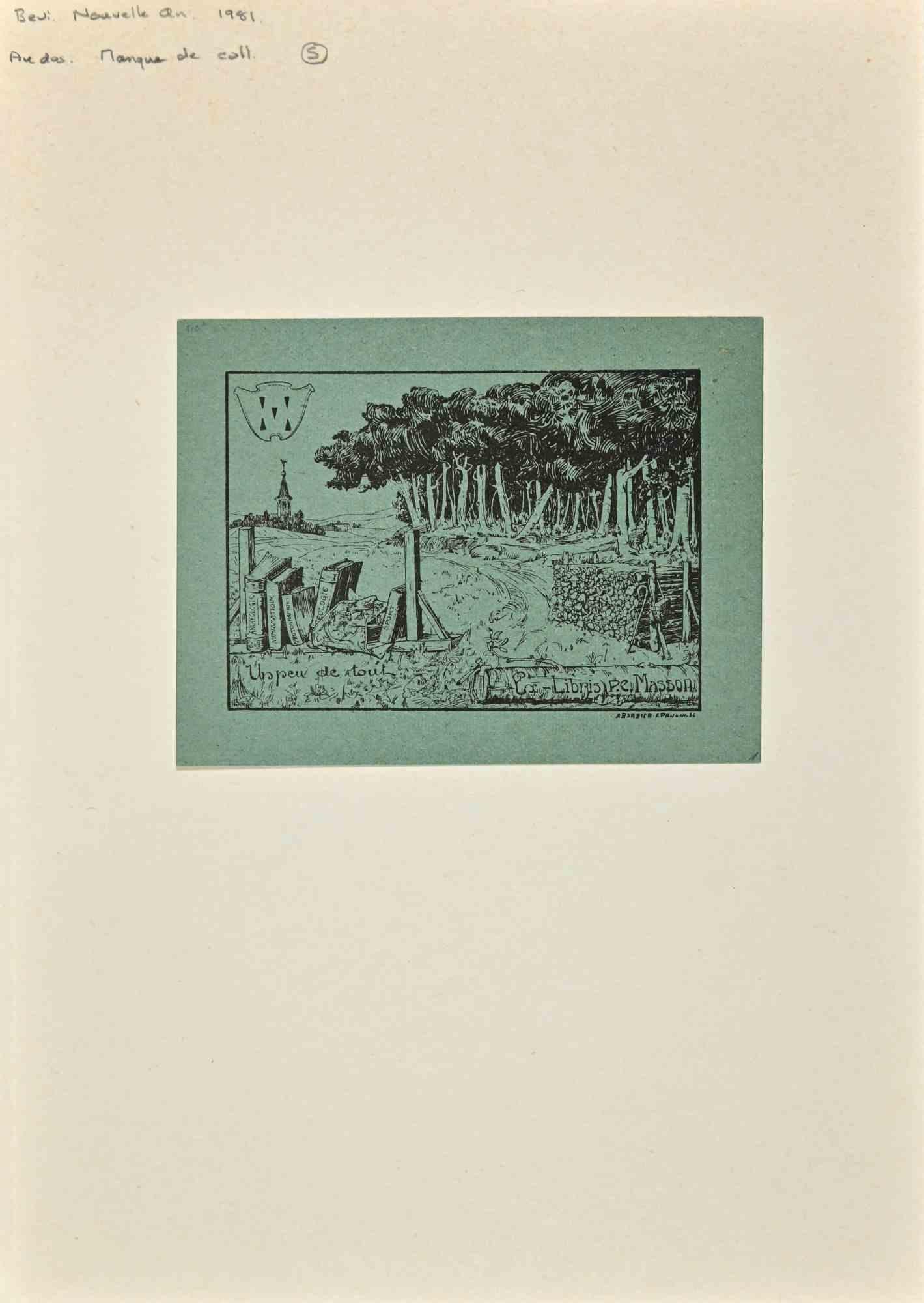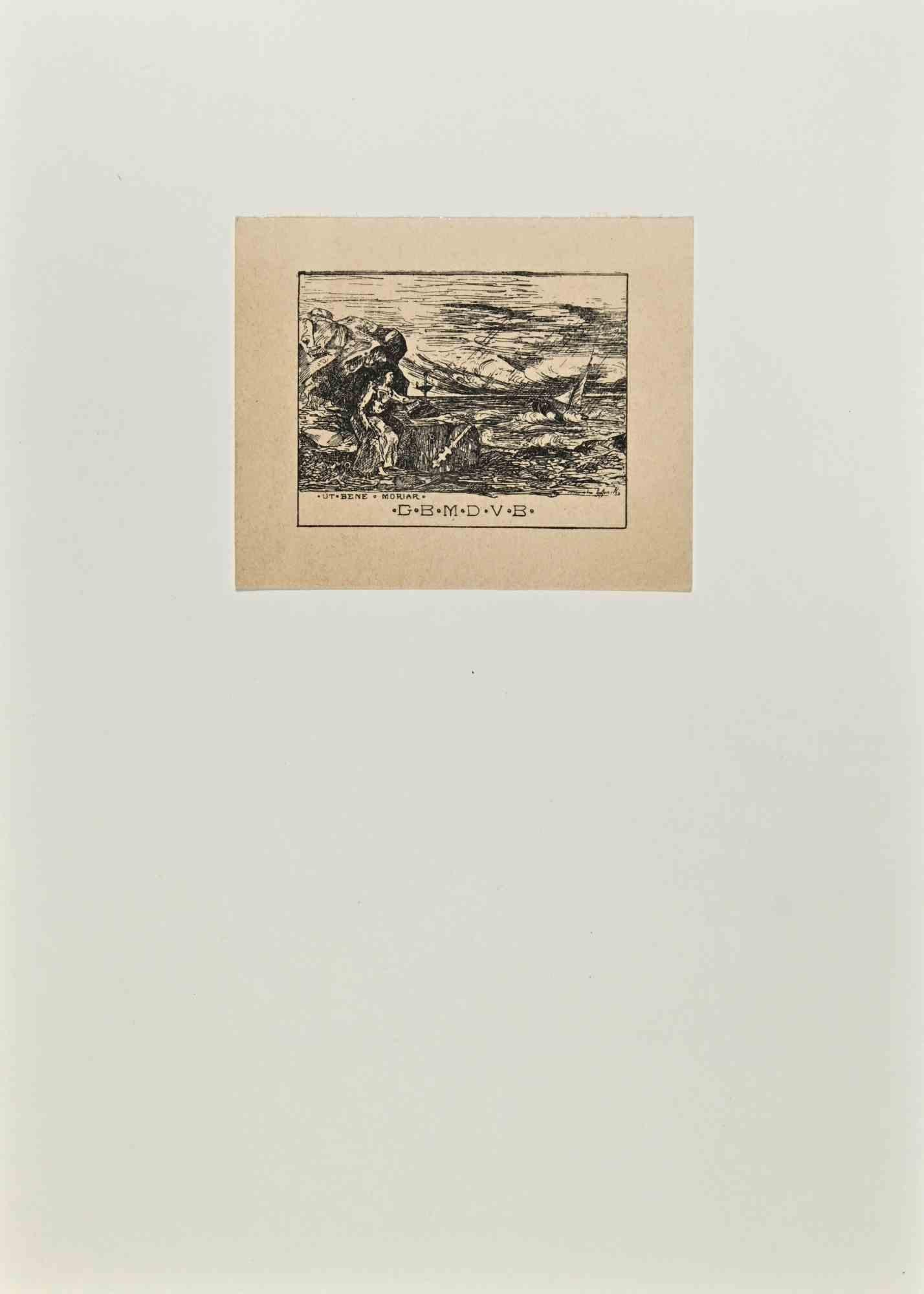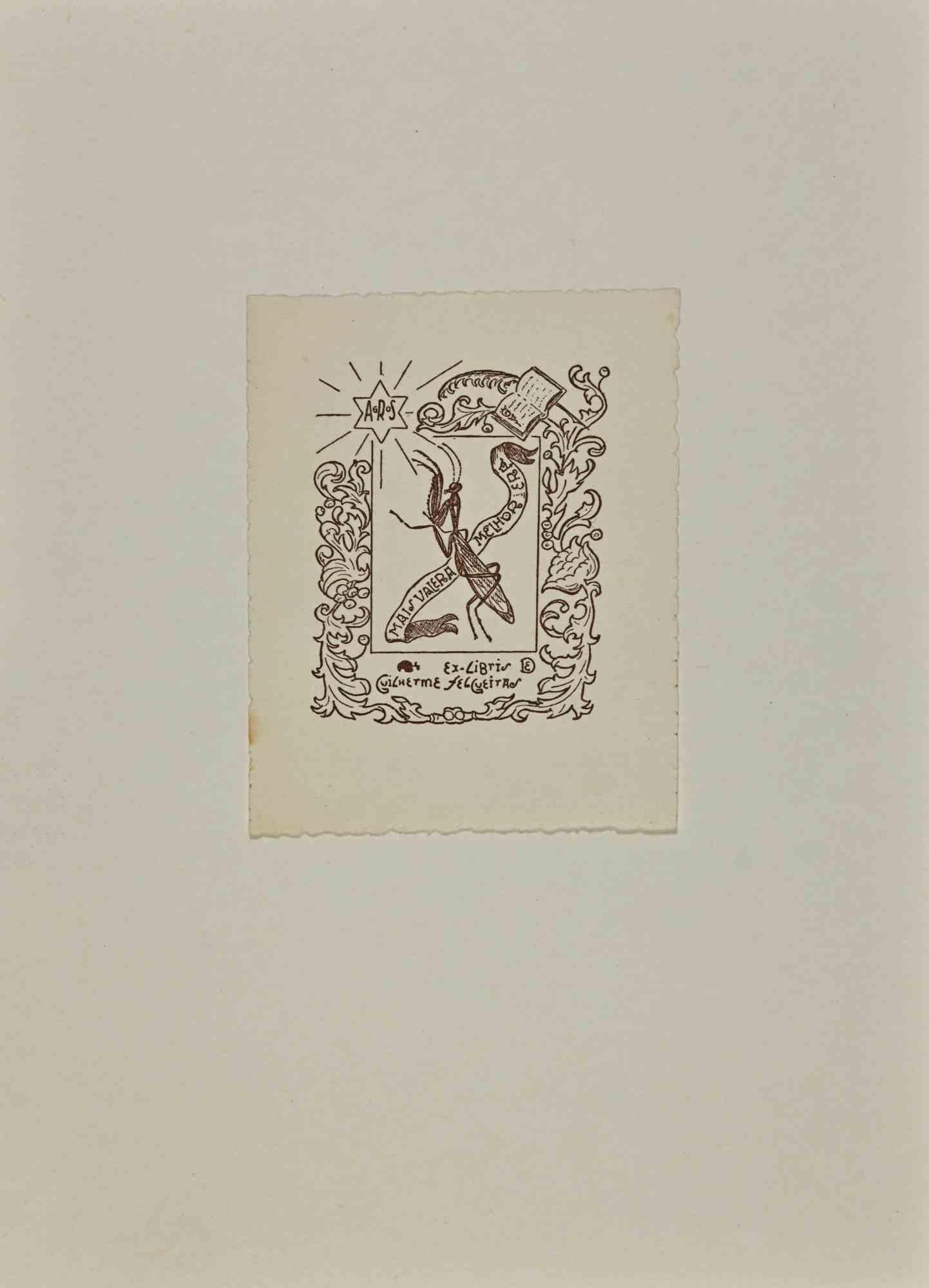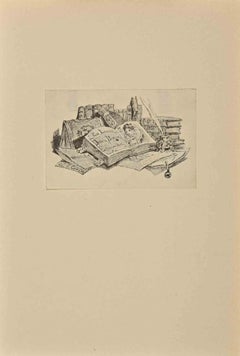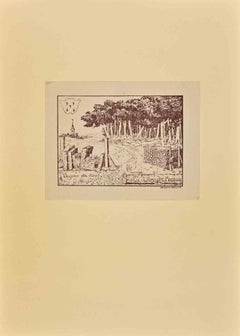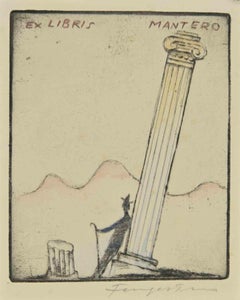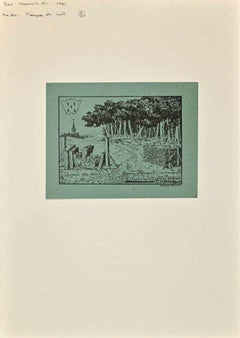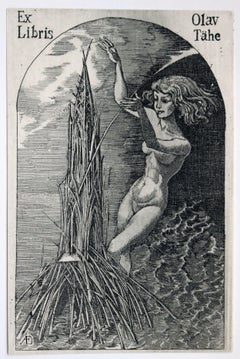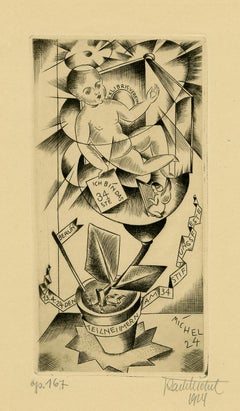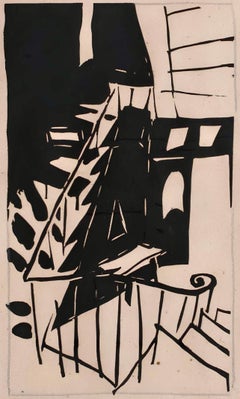Items Similar to Ex Libris - Edgar Mareuse - Woodcut by Edgar Mareuse - 1920s
Want more images or videos?
Request additional images or videos from the seller
1 of 2
Edgar MareuseEx Libris - Edgar Mareuse - Woodcut by Edgar Mareuse - 1920s1920s
1920s
$113.83
$189.7140% Off
£86.51
£144.1840% Off
€96
€16040% Off
CA$159.72
CA$266.1940% Off
A$174.29
A$290.4840% Off
CHF 90.46
CHF 150.7740% Off
MX$2,085.19
MX$3,475.3140% Off
NOK 1,148.29
NOK 1,913.8140% Off
SEK 1,075.59
SEK 1,792.6440% Off
DKK 731.43
DKK 1,219.0540% Off
About the Item
Ex Libris - Edgar Mareuse is a Modern Artwork realized in 1920s, by Edgar Mareuse.
Ex Libris. B/W woodcut on paper.
The work is glued on cardboard.
Total dimensions: 21x 15 cm.
Good conditions.
The artist wants to define a well-balanced composition, through a correct relationship between shapes and spaces.
- Creator:Edgar Mareuse
- Creation Year:1920s
- Dimensions:Height: 3.94 in (10 cm)Width: 4.73 in (12 cm)Depth: 0.04 in (1 mm)
- Medium:
- Movement & Style:
- Period:
- Framing:Framing Options Available
- Condition:Insurance may be requested by customers as additional service, contact us for more information.
- Gallery Location:Roma, IT
- Reference Number:Seller: T-1404191stDibs: LU650312565862
About the Seller
4.9
Platinum Seller
Premium sellers with a 4.7+ rating and 24-hour response times
1stDibs seller since 2017
7,802 sales on 1stDibs
Typical response time: 1 hour
- ShippingRetrieving quote...Shipping from: Grasse, France
- Return Policy
More From This Seller
View AllEx Libris - Woodcut - Mid 20th Century
Located in Roma, IT
Ex Libris is an Artwork realized in Mid 20th Century.
Woodcut print on paper. The work is glued on ivory cardboard.
Total dimensions: 21 x 15 cm.
Good conditions.
The artist want...
Category
Mid-20th Century Modern Figurative Prints
Materials
Woodcut
$106 Sale Price
40% Off
Ex Libris - P.E. Masson - Woodcut - 1981
Located in Roma, IT
Ex Libris - P.E. Masson is an Artwork realized in 1981.
Woodcut print on paper. The work is glued on ivory cardboard.
Total dimensions: 20.5 x 15 cm.
Good conditions.
The arti...
Category
1980s Modern Figurative Prints
Materials
Woodcut
$106 Sale Price
40% Off
Ex Libris - Mantero - Woodcut by Michel Fingesten - 1930s
By Michel Fingesten
Located in Roma, IT
Ex Libris - Mantero is a Woodcut print created by Michel Fingesten.
Hand Signed on the lower right margin.
Very Good condition.
Michel Fingesten (1884 - 1943) was a Czech painter...
Category
1930s Symbolist Figurative Prints
Materials
Woodcut
$360 Sale Price
20% Off
Ex Libris - P.E. Masson - Woodcut - 1981
Located in Roma, IT
Ex Libris - P.E. Masson is an Artwork realized in 1981.
Woodcut print on paper. The work is glued on green cardboard.
Total dimensions: 21x 15 cm.
Good conditions.
The artist ...
Category
1980s Modern Figurative Prints
Materials
Woodcut
$106 Sale Price
40% Off
Ex-Libris - G.B.M.D.V.B. - Woodcut - Mid 20th Century
Located in Roma, IT
Ex-Libris - G.B.M.D.V.B. is an artwork realized in Mid 20th Century.
Woodcut B./W. print on ivory paper. The work is glued on cardboard.
Total dimensions: 21 x 15 cm.
Excellent ...
Category
Mid-20th Century Modern Figurative Prints
Materials
Woodcut
$124 Sale Price
30% Off
Ex Libris - Woodcut - Mid 20th Century
Located in Roma, IT
Ex Libris is an Artwork realized in Mid 20th Century.
Woodcut B./W. print on paper. The work is glued on cardboard.
Total dimensions: 21 x 15 cm.
Good conditions.
The artwork re...
Category
Mid-20th Century Modern Figurative Prints
Materials
Woodcut
$124 Sale Price
30% Off
You May Also Like
Ex libris. Paper, woodcut, 11x7cm
Located in Riga, LV
Ex libris Olav Tähe
Paper, woodcut, 11x7cm
Category
1990s Jugendstil Nude Prints
Materials
Paper, Woodcut
$170 Sale Price
20% Off
'Ex Libris Verein' — 1920s German Expressionism
By Karl Michel
Located in Myrtle Beach, SC
Karl Michel, 'Ex Libris Verein' (New Year's Ex Libris Club Announcement), etching, 1924. Signed, dated, and numbered 'op. 167' in pencil. Signed and dated in...
Category
1920s Expressionist Figurative Prints
Materials
Etching
Pougny, Composition, Pougny, dix linogravures originales, 1914-1920 (after)
By Jean Pougny
Located in Southampton, NY
Linocut on vélin vergé ancien paper. Unsigned and unnumbered, as issued. Good condition. Notes: From the folio, Pougny, dix linogravures originales, 1964. Published by Au Vent d'Arle...
Category
1960s Cubist Abstract Prints
Materials
Linocut
$4,076 Sale Price
20% Off
Free Shipping
British Art Deco woodcut by early 20th Century artist Edward Gordon Craig
Located in Petworth, West Sussex
Edward Henry Gordon Craig (British, 1872-1966)
La Procession Nocturne (state 1)
Woodcut
Inscribed `State 1 only 8 copies’ (lower left under mount)
5.1/8 ...
Category
20th Century Art Deco Figurative Prints
Materials
Woodcut
British Art Deco woodcut print of a figure creeping up on a foe
Located in Petworth, West Sussex
Edward Henry Gordon Craig (British, 1872-1966)
Creeping up on a foe
Woodcut
Inscribed `Only 7 copies printed – copy 7’ (under the mount)
4.1/8 x 4.5/8 in....
Category
20th Century Art Deco Figurative Prints
Materials
Woodcut
Ex Libris. Paper, etching, 11x7 cm
Located in Riga, LV
Ex Libris A. Zuyeva
Paper, etching, 11x7 cm
Category
1990s Jugendstil Nude Prints
Materials
Paper, Etching
$170 Sale Price
20% Off
More Ways To Browse
Guillermo Silva
Henri Matisse Dancer Artworks
Into 84 Keith Haring
K Rafael
Karel Appel Frame
Keith Haring Andy Mouse
Keith Haring Hand Signed
Keith Haring Montreux Jazz Festival
Keith Haring Party Of Life
Keith Haring Skate
Leon Gaucherel
Marc Chagall Paradise
Maria Izquierdo
Nicolas Cochin
Original Etching 16th Century
Paloma Picasso Print
Paris Gallery Poster
Picasso 1966
